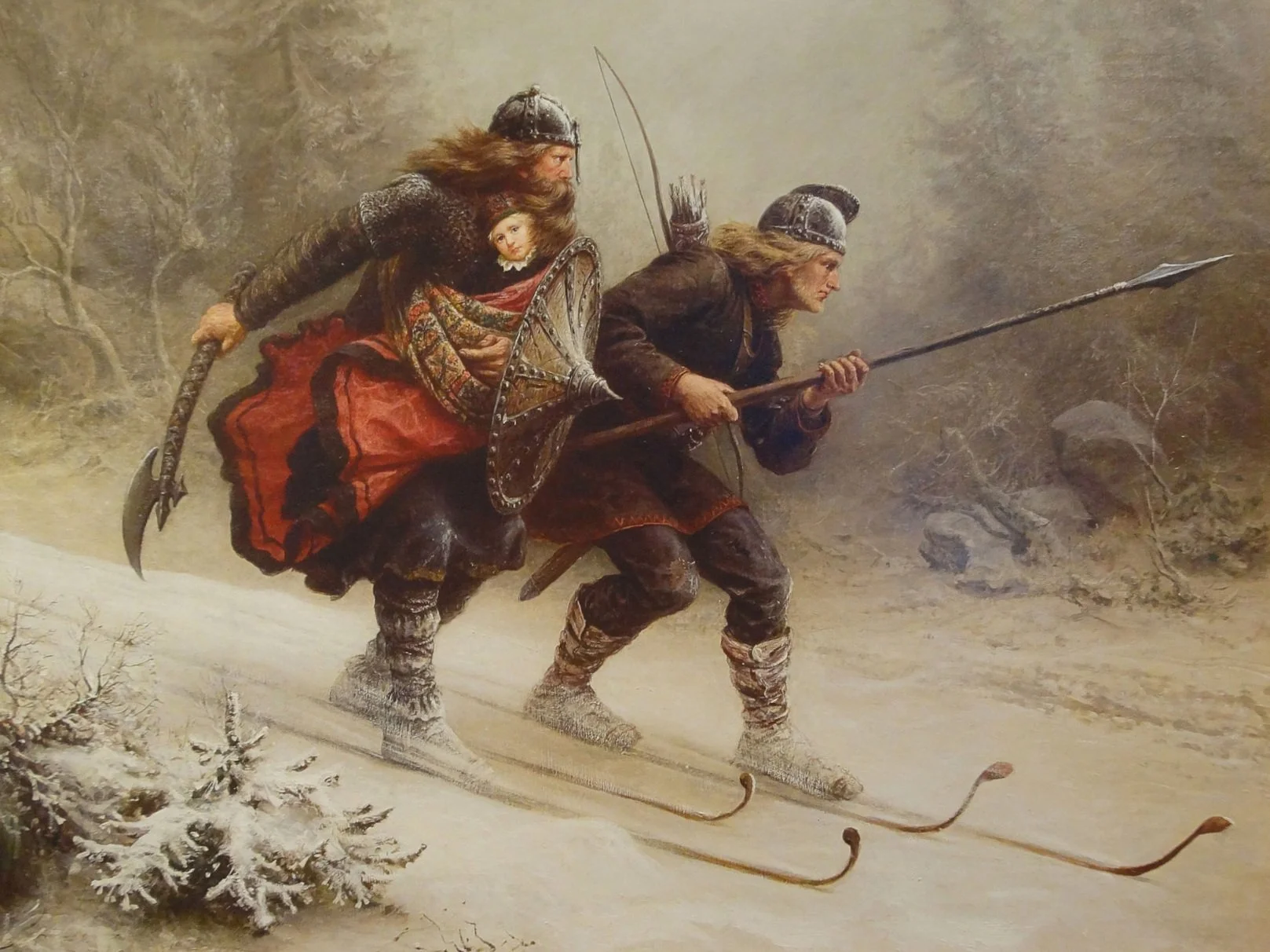Birkebeiner Folklore
Skiing Birchlegs Crossing the Mountain with the Royal Child, painted by Knud Bergslien.
All the Birken races are founded upon the legendary escape that the Birkebeiners, Skjervald Skrukka and Torstein Skjevla, managed around New Year 1205/1206, rescuing the little prince Haakon Haakonssen from the Baglers. During this civil war the fraction rivaling against the Birkebeiners, the Baglers, was looking for the young heir to the Norwegian throne.
To keep Haakon Sverressons son - Haakon Haakonsson, from being killed by the Baglers, and by that securing the throne, a small group of Birkebeiners brought prince Haakon and his mother, Inga, north. Just after New Years Eve 1206 the two best skiers - Torstein Skevla and Skjervald Skrukka, carrying the child, chose the route across the mountains separating Gudbrandsdalen and Østerdalen. It was a strenuous journey, but the young prince was brought to safety in Trondheim.
The prince grew to become the king who united Norway, after 1000 years of civil war, and led the country into its golden age during the Middle Ages.
The name Birkebeinere was given by the Baglers, and originally intended to be offensive - referring to their leggings of birch bark, indicating that they were poor and incapable. They proved the Baglers wrong, and today the name carries a sence of pride, strength and endurance - something thousands of people, participating in the historical race every year, keep striving for.
Birkebeiner Race Today
photo credit The Birken
The modern day 54 km nordic race, starts from Rena crossing mountains and valleys to finish in Lillehammer commemorating a historical event from civil war-ridden Norway. All participants must carry a backpack weighing at least 3.5 kg throughout the race, representing the weight of baby King Haakon.
The Birkebeiner, the most challenging long-distance cross-country ski race on the Worldloppet circuit. The course crosses two mountains through breathtaking sceneries and takes you 9km through forrest terrain up to Skramstadsetra (640m.a.s.l), where the first drink station is situated. You continue to the first mountain top at Dølfjellet (820m.a.s.l), and then downhill for 17km until you reach Dambua (760 m.a.s.l). From there the track climbs west crossing Raudfjellet(880 m.a.s.l) after 20km. The skiers continue pass Nysætra in forrest terrain and reach Kvarstaddammen (660m.a.s.l) after 27km. From Kvarstaddammen the track takes you through the forrest up to Midtfjellet (910 m.a.s.l) where you keep going west for 41km through the open mountain terrain to Sjusjøen (880 m.a.s.l). Going downhill from Sjusjøen, you enter the Birkebeineren Ski stadium, where the finish line is, at 490 m.a.s.l.
The demanding mountains makes it a real challenge to all XC skiers and a rite of passage under tough conditions. The course can only be reached by road at three points. Safety measures are of the highest priority. In Norwegian history Haakon Haakonsson is known as a great king. He put an end to the civil war and during his long reign Norway had a heyday in the Middle Ages. The daring rescue of the prince made history and history made a ski race called The Birkebeiner. difference.


